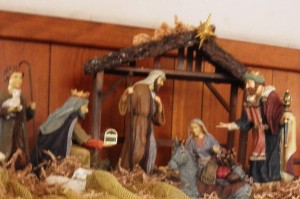 Our neighbor, Marge, faced Christmas from her bed. Battling illness for a few years, she’d grown so weak that her life had been pared down to activities of survival.
Our neighbor, Marge, faced Christmas from her bed. Battling illness for a few years, she’d grown so weak that her life had been pared down to activities of survival.
My friend, Jean, had emigrated from Scotland fifty years earlier and still reveled in all things Scottish. When any of us was ill, mourning, or struggling in any way, Jean’s gift was always a prayer and a tin of luscious shortbread cookies.
So this year, as Marge’s world had shrunk, Jean remembered Marge’s comment from last Christmas. “My grandson said your shortbread was the best cookie he’d ever tasted. I’d love to have your recipe so I can make him some.” And Marge’s grandson, serving in Afghanistan, was coming home for Christmas and to see her before she died. So rather than shopping, or singing carols around the neighborhood, or watching Christmas movies, Jean baked shortbread. Then she wrapped it up in bright Christmas paper, tied it with a red bow, addressed the tag to Marge’s grandson, signed the card “Love, Grandma,” and walked it over to Marge’s.
As we walked and talked about Christmas, Jean praised me for teaching a weekly Bible study and said she wished she had some talent or gift God could use. Jaw dropping, I stopped and stared at her five-foot form and then shared my disagreement. Her comment highlights the way many of us have trouble knowing how to convert our beliefs into actions.
We all know that when Jesus was born, Bethlehem was crowded, and with no room available, Joseph and Mary had sought out some humble space to rest.
 Whether stable, cave, or what, we don’t know exactly, but Immanuel’s first crib was a manger—a crude feed trough. So in modern times, we often hear the admonition, “Make room for The Christ Child.” But what does that mean, and how do we do that nowadays? Continue reading
Whether stable, cave, or what, we don’t know exactly, but Immanuel’s first crib was a manger—a crude feed trough. So in modern times, we often hear the admonition, “Make room for The Christ Child.” But what does that mean, and how do we do that nowadays? Continue reading
